Spanish style living rooms are celebrated for their warm, inviting atmospheres achieved through a harmonious blend of natural materials, rich textures, and timeless architectural details. Drawing inspiration from Mediterranean and Moorish influences, these spaces feature earthy color palettes, intricate tile work, and handcrafted accents that evoke the sun-drenched landscapes of Spain. From exposed wooden beams to textured stucco walls and vibrant hand-painted ceramics, each element contributes to a cohesive design that feels both rustic and refined. Whether you’re seeking a full-scale renovation or subtle stylistic touches, these 20 ideas will guide you in creating an authentic Spanish-inspired living room that exudes charm and character.
1. Warm Earthy Color Palette

Adopt a warm, earthy color palette as the foundation of your Spanish style living room. Think terracotta, ochre, and clay hues on walls or accent pieces, balanced by creamy whites and soft beiges. These colors mirror Spain’s sun-baked landscapes and infuse your space with an inviting glow. You can introduce deeper accents—such as olive green or deep indigo—to add depth without overpowering the overall warmth. Layering these hues across textiles, rugs, and decor items creates a cohesive and grounded atmosphere that feels both timeless and soothing.
2. Exposed Wooden Beams
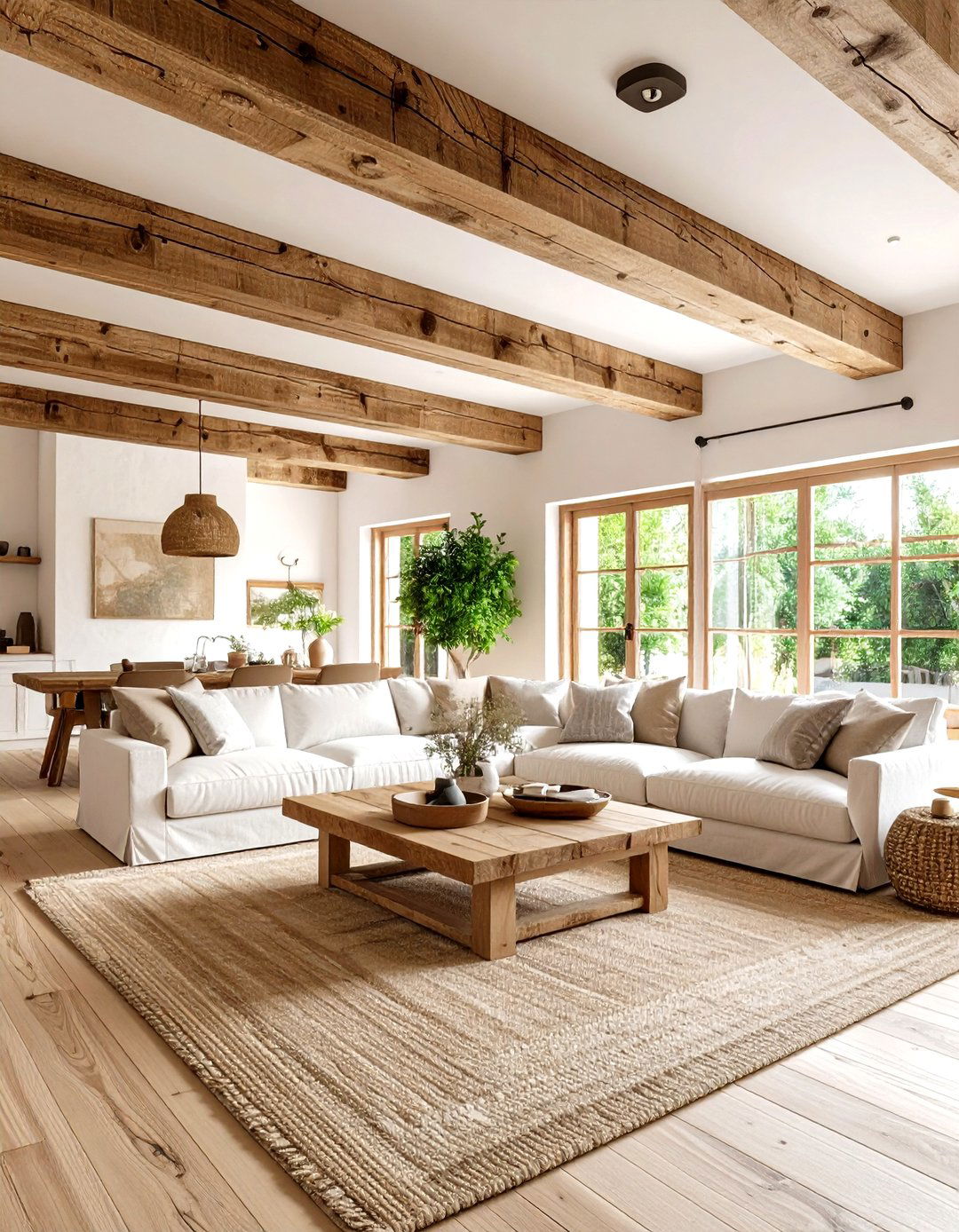
Incorporate exposed wooden ceiling beams to lend architectural authenticity and rustic charm. Traditionally found in Spanish colonial homes, dark-stained beams contrast beautifully against white or light-hued ceilings, drawing the eye upward and highlighting high ceilings. If structural beams aren’t feasible, faux wood beam installations offer a convincing alternative. Position lighting fixtures along the beams to accentuate their texture and create subtle ambient illumination. This structural feature not only reinforces the Mediterranean aesthetic but also adds a sense of history and craftsmanship to your living room.
3. Stucco and Textured Plaster Walls

Opt for stucco or textured plaster finishes on walls to evoke traditional Spanish colonial interiors. These slightly uneven surfaces catch light in unique ways, lending depth and softness to the room. Choose lime-based Venetian plaster or tadelakt for a refined sheen, or a rougher, hand-applied finish for a more rustic feel. Textured walls pair naturally with wrought iron and wooden elements, enhancing the authentic Mediterranean vibe. For added interest, consider a subtle color wash over the plaster to infuse extra warmth without detracting from the wall’s tactile appeal.
4. Arched Doorways and Windows
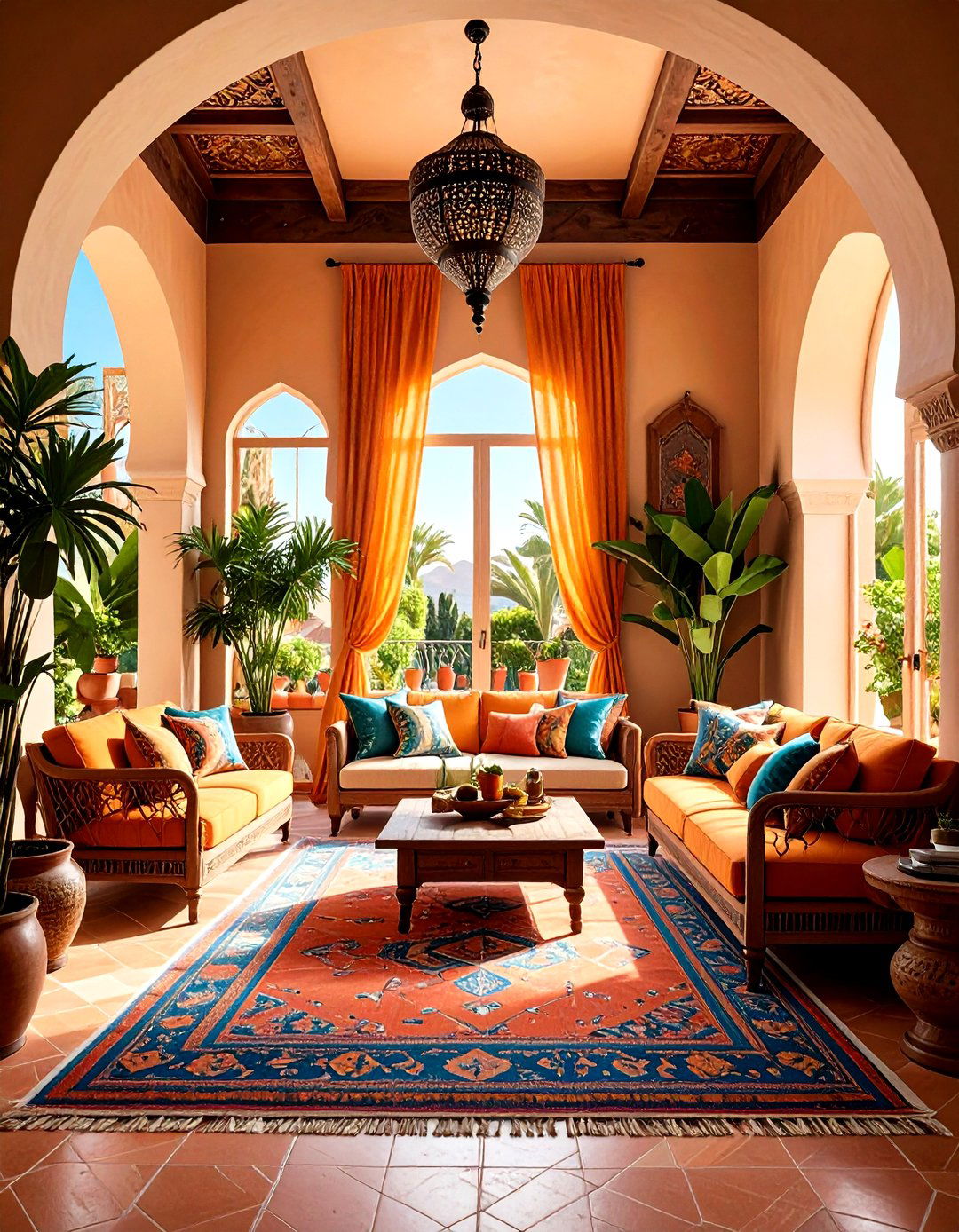
Embrace arched architectural elements—doorways, windows, and alcoves—to channel classic Spanish design. Soft curves soften transitions between spaces and introduce an elegant silhouette reminiscent of Moorish influence. If structural changes aren’t possible, install arched mirrors or add faux arch trims to existing frames. Pair arched openings with wooden shutters or heavy draperies in natural fabrics to accentuate their form. These arches not only frame views but also contribute to the rhythmic flow of the room, guiding the eye while enhancing the room’s sense of space and drama.
5. Terracotta and Patterned Tile Flooring
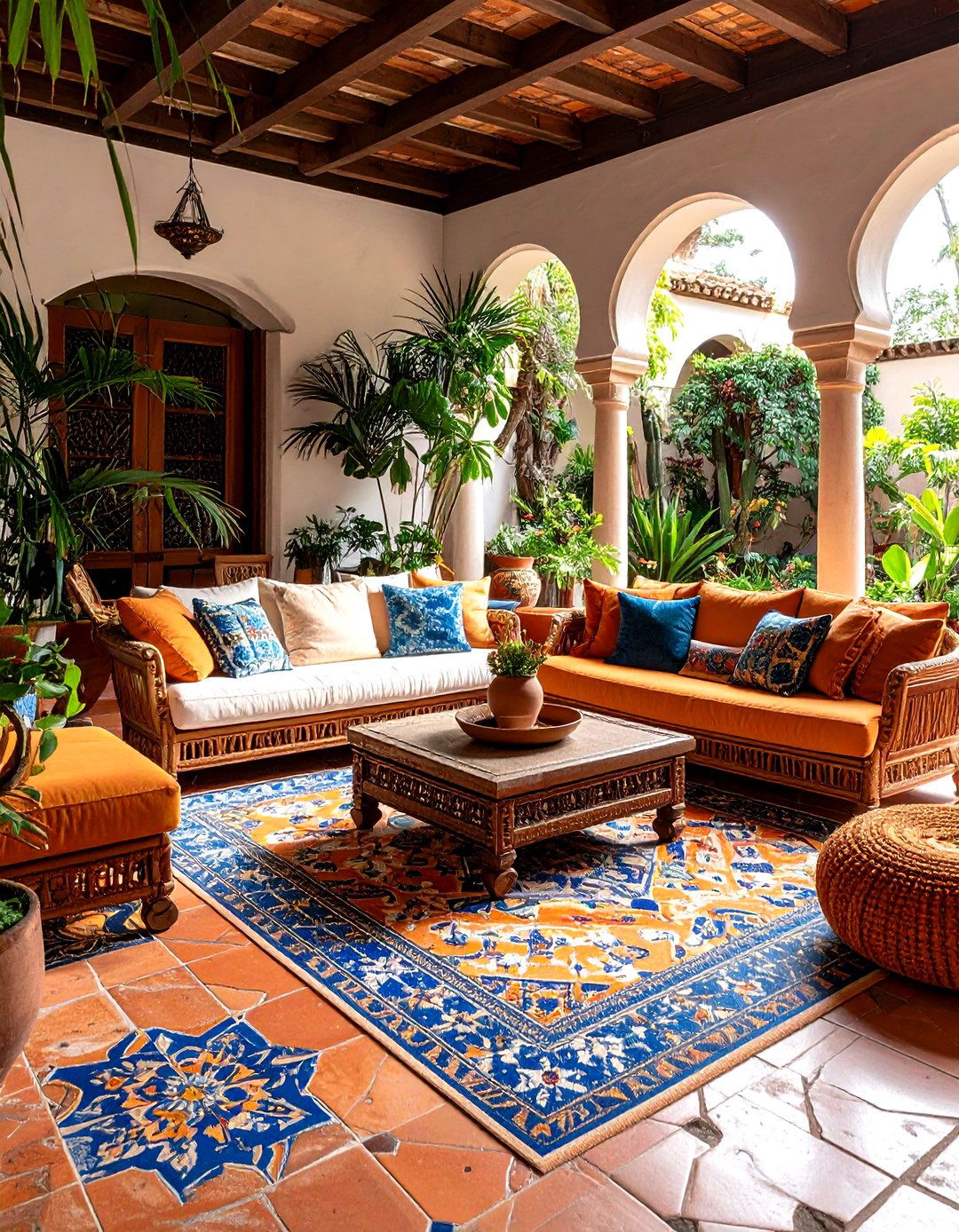
Feature terracotta or traditional patterned tiles for an authentic Spanish floor. Terracotta’s warm, reddish tones complement earthy palettes, while hand-painted ceramic tiles introduce intricate motifs and pops of color. Tile designs range from geometric Moorish patterns to floral Talavera styles; use them as full-floor treatments or create framed tile medallions. In regions with colder climates, add area rugs to soften the look and provide comfort underfoot. The durable, easy-to-clean nature of tile makes it both a practical and beautiful choice for high-traffic living areas.
6. Wrought Iron Accents
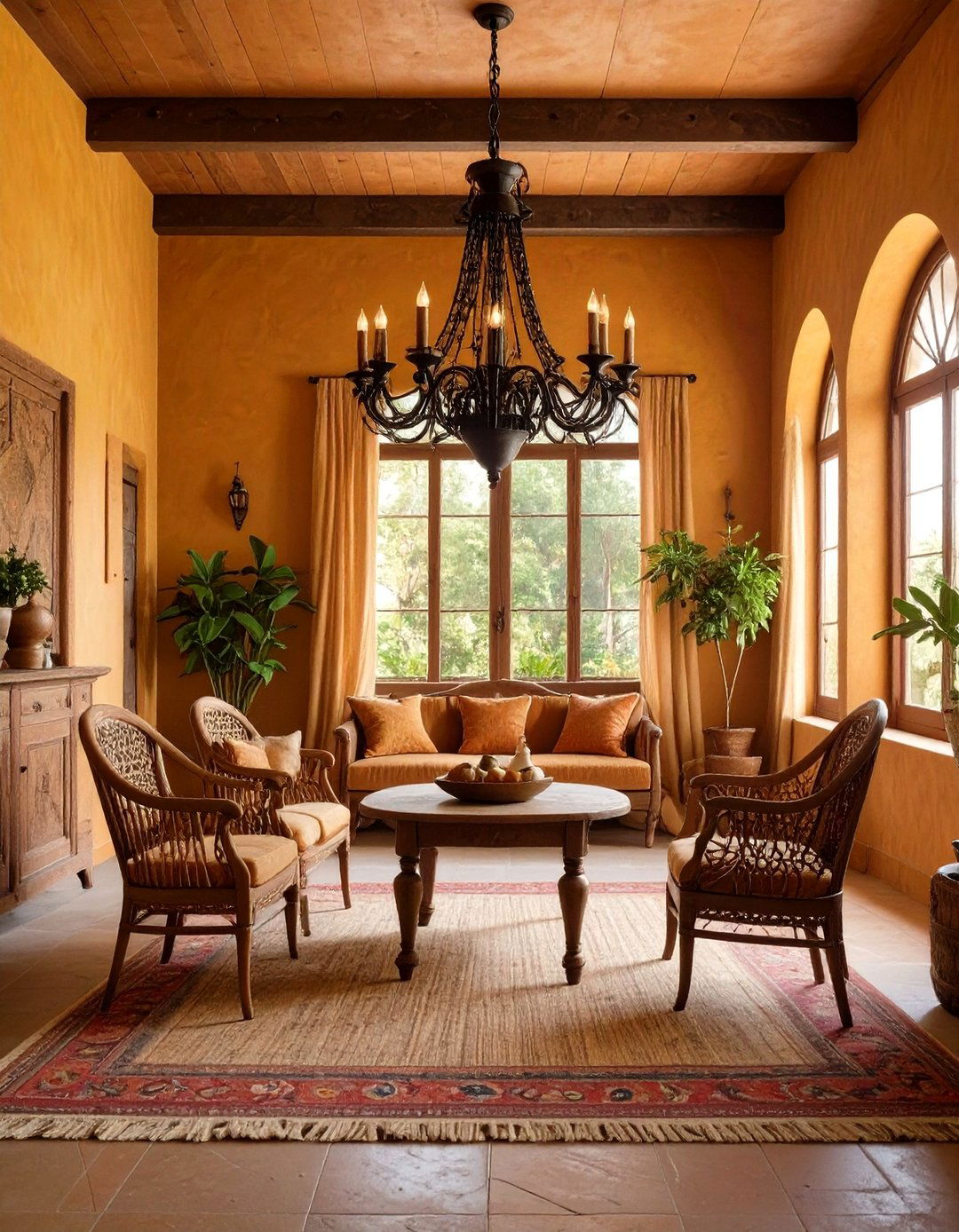
Integrate wrought iron details—light fixtures, curtain rods, furniture legs, and railing—to introduce rustic elegance. Hammered or scrollwork designs are characteristic of Spanish craftsmanship and add visual interest through their intricate forms. A wrought iron chandelier or wall sconces can serve as a focal point, casting patterned shadows for added ambiance. Smaller accents like iron side tables or decorative grilles over windows reinforce the theme without overwhelming the space. The contrast between dark iron and lighter walls or ceilings heightens the room’s textural interplay.
7. Statement Fireplace
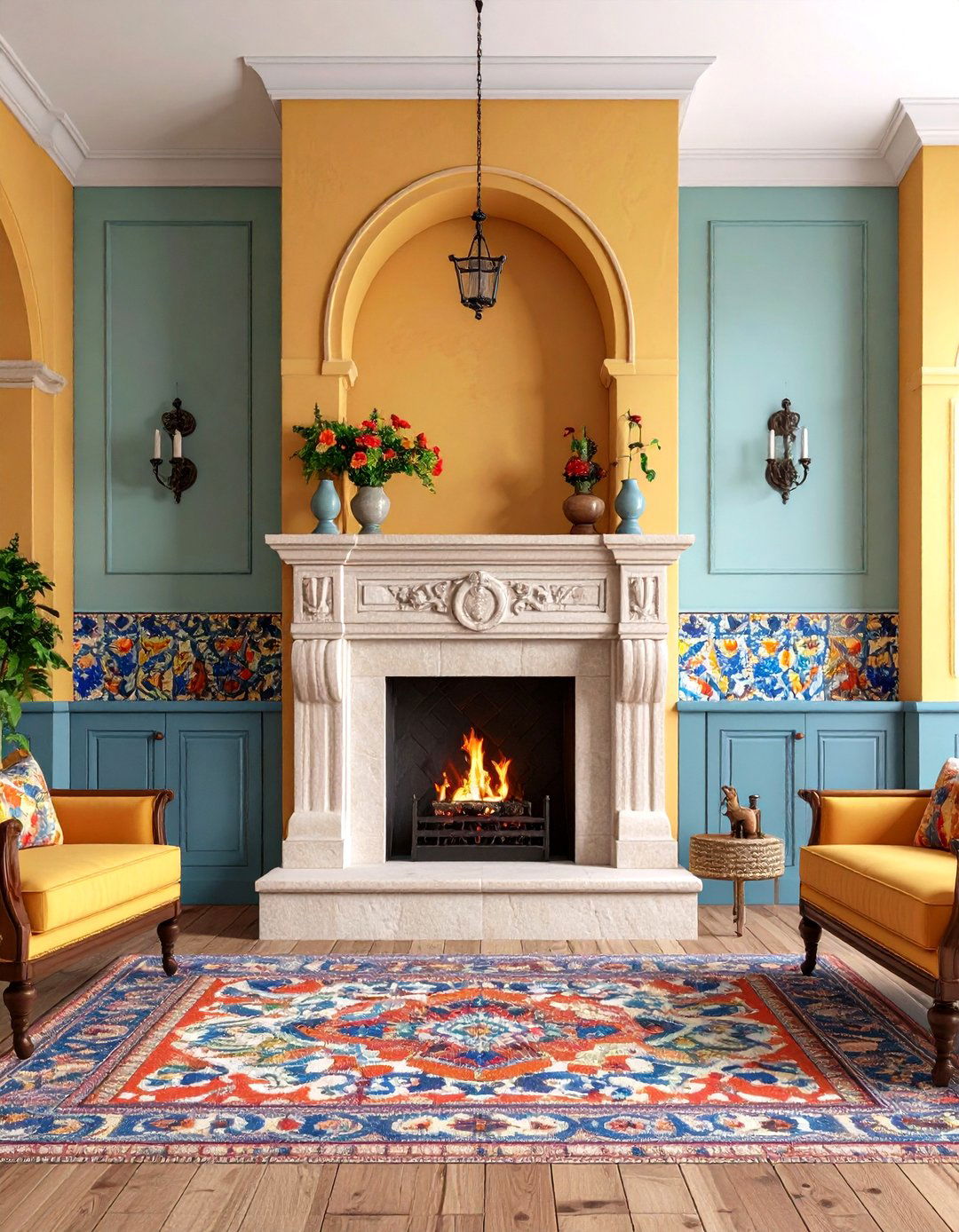
Make the fireplace the heart of your living room by designing it as a statement piece. Choose a stucco-clad hearth with a rounded opening or a grand arched surround. Accent with hand-painted tile inlay along the mantle or hearth edge for artisanal flair. Decorate the mantle with pottery, candlesticks, or a rustic wooden beam. For a more modern touch, install a sleek, black iron fireplace screen. Whether wood-burning or gas, a prominent fireplace infuses warmth—both visually and physically—anchoring the room in traditional Spanish hospitality.
8. Rustic Wooden Furniture

Select solid wood furniture with a hand-hewn or distressed finish to convey rustic authenticity. Pieces like chunky coffee tables, carved sideboards, and sturdy armchairs reflect Spanish heritage. Dark woods such as walnut or mahogany are classic choices, while lighter reclaimed woods suit more modern interpretations. Upholster seating in natural fabrics—linen, cotton, or leather—to complement the wood’s texture. Embrace simple, robust silhouettes with minimal ornamentation, allowing the material’s natural beauty to shine through and contribute to a warm, grounded atmosphere.
9. Textured Plaster Niches and Alcoves
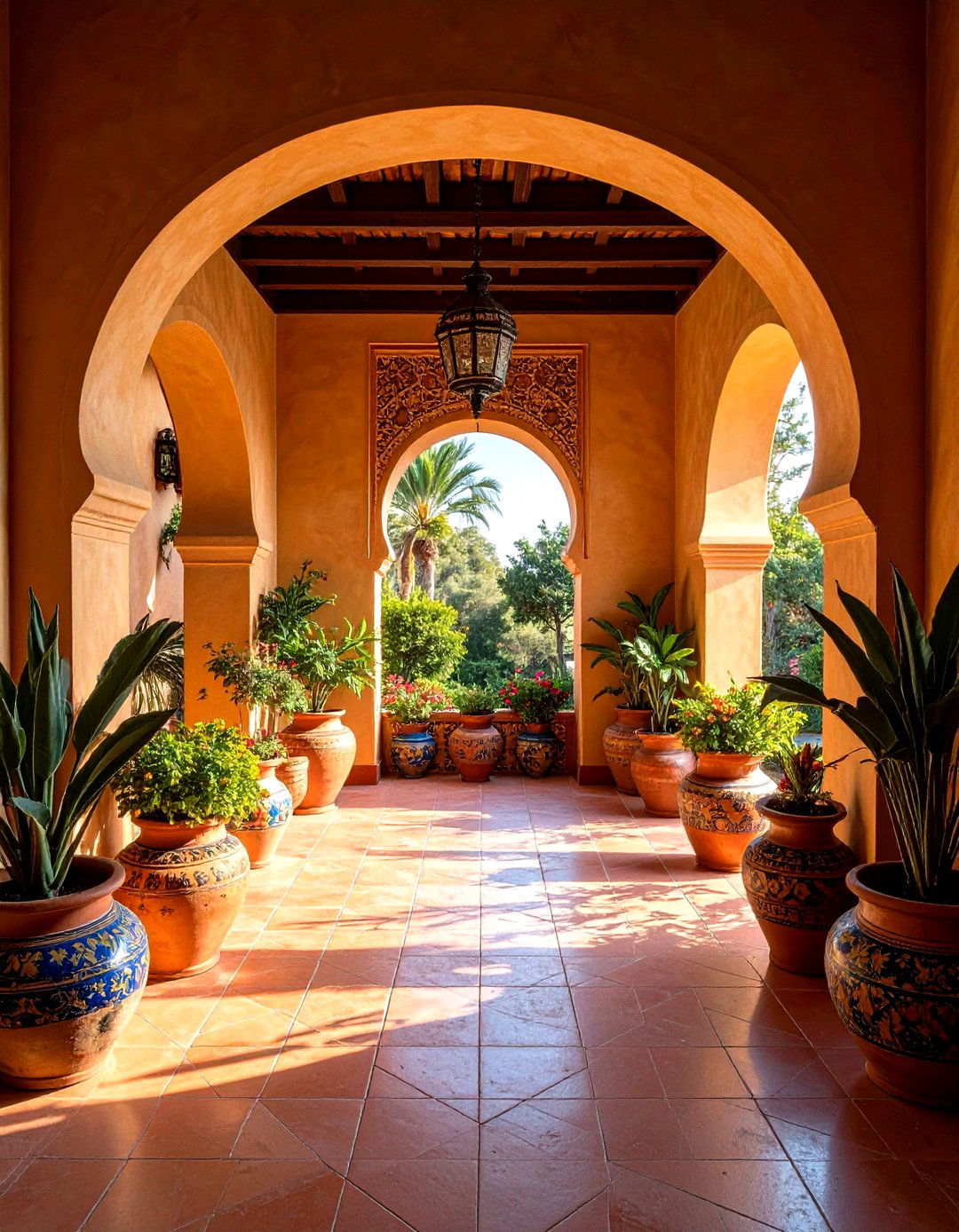
Incorporate built-in niches and alcoves finished with textured plaster to display art, ceramics, or books. These small recessed spaces provide both architectural interest and functional display areas. Line niches with subtle accent lighting or tile backing for added depth. Rounded or arch-topped niches feel particularly Spanish in style. Use them to showcase decorative pottery, framed photos, or a curated collection of antique finds. The interplay of light and shadow on plaster surfaces enhances the room’s layered look, creating focal points that draw the eye organically.
10. Handcrafted Textiles and Rugs
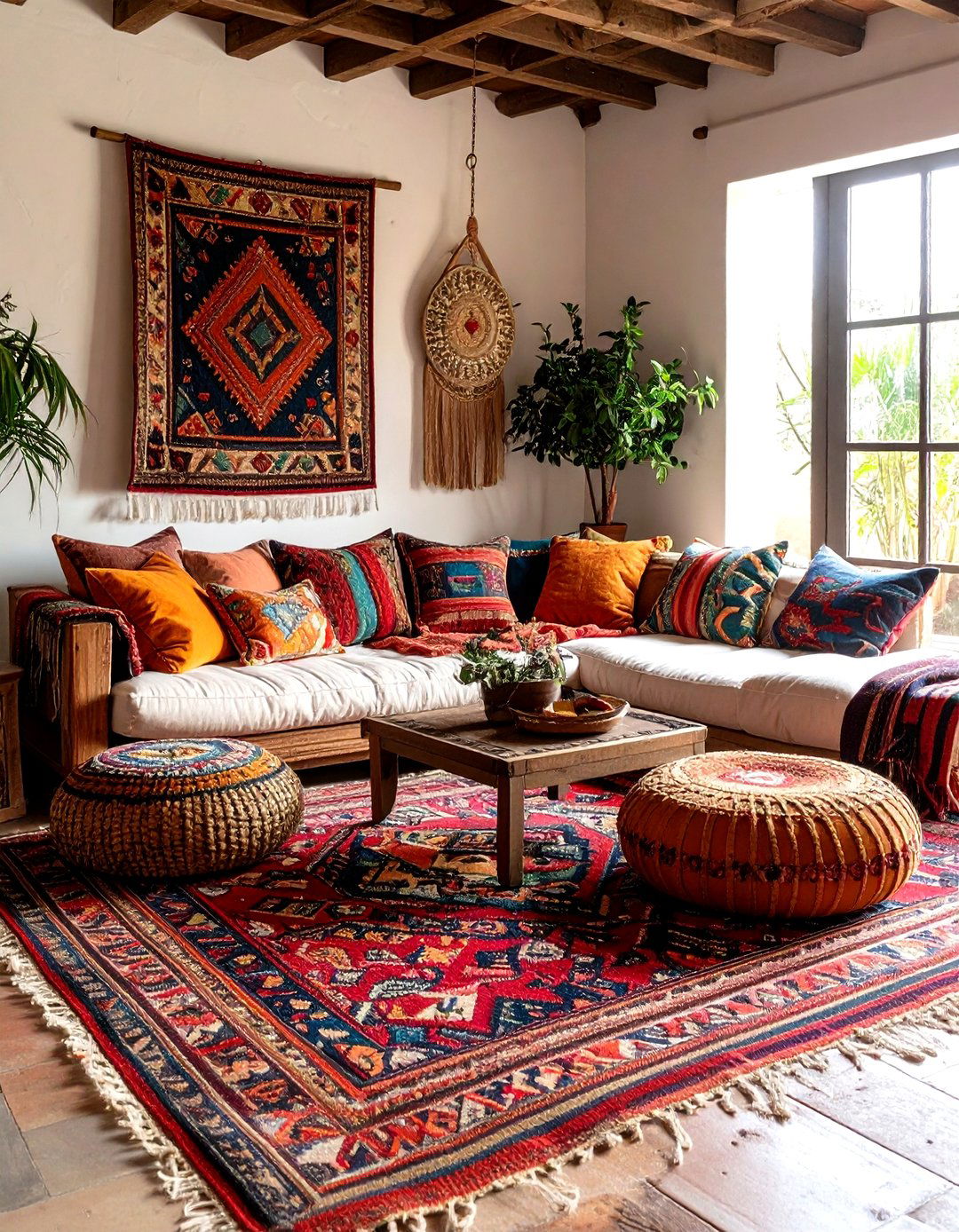
Layer your floors and furnishings with handcrafted textiles—kilim rugs, Mexican serapes, or wool dhurries—to introduce pattern and warmth. Traditional Spanish designs often feature geometric motifs and bold color contrasts. Drape woven throws over sofas and chairs, and choose cushion covers in embroidered or scalloped-edge styles. These textiles add softness and tactile richness, balancing the harder surfaces of tile and plaster. Mix patterns and scales thoughtfully, ensuring a cohesive palette that ties back to your room’s earthy hues for a curated yet lived-in feel.
11. Talavera and Hand-Painted Ceramics
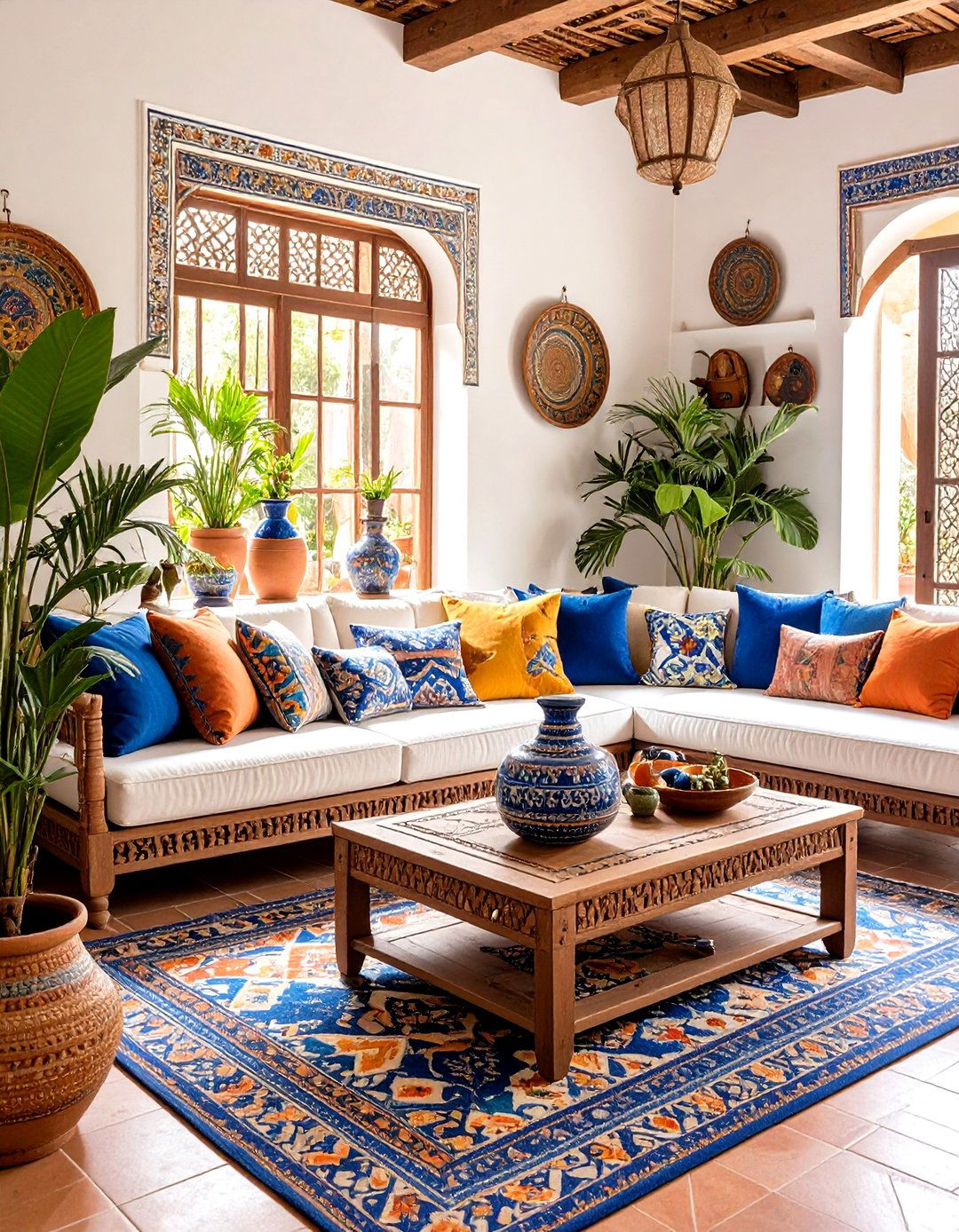
Display Talavera pottery—large vases, bowls, and planters—in vibrant hand-painted patterns to inject color and craftsmanship. These ceramics often feature floral or Moorish-inspired motifs in blues, yellows, and greens. Arrange a grouping on a console table or use a single oversized piece as a sculptural accent. Smaller bowls can hold potpourri or serve as catchalls. The glossy glaze contrasts beautifully against matte plaster walls, creating visual focal points that celebrate artisanal traditions and add cultural authenticity to your Spanish style living room.
12. Statement Lighting and Lanterns
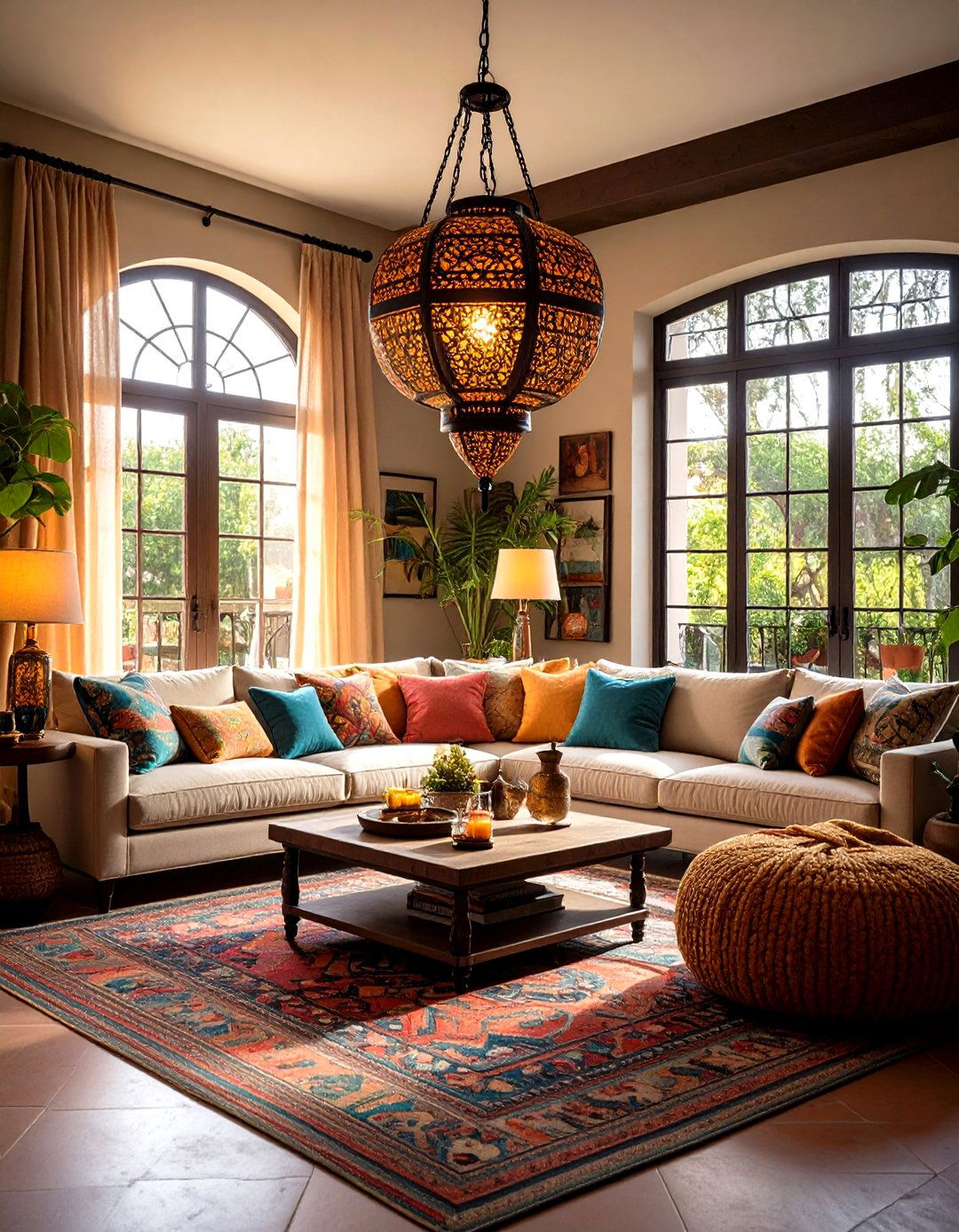
Illuminate the room with statement lighting pieces—wrought iron chandeliers, Moroccan lanterns, or ceramic pendant lights. Choose fixtures with filigree patterns or colored glass inserts to cast decorative shadows. Suspended lanterns in clusters over seating areas create an intimate ambiance. Table lamps with tiled bases or terracotta shades further reinforce the theme. Accent lighting in niches and along beams highlights architectural features. Effective lighting design not only provides function but also enhances the room’s textural richness and evokes a warm Mediterranean glow.
13. Indoor-Outdoor Connection with Plants
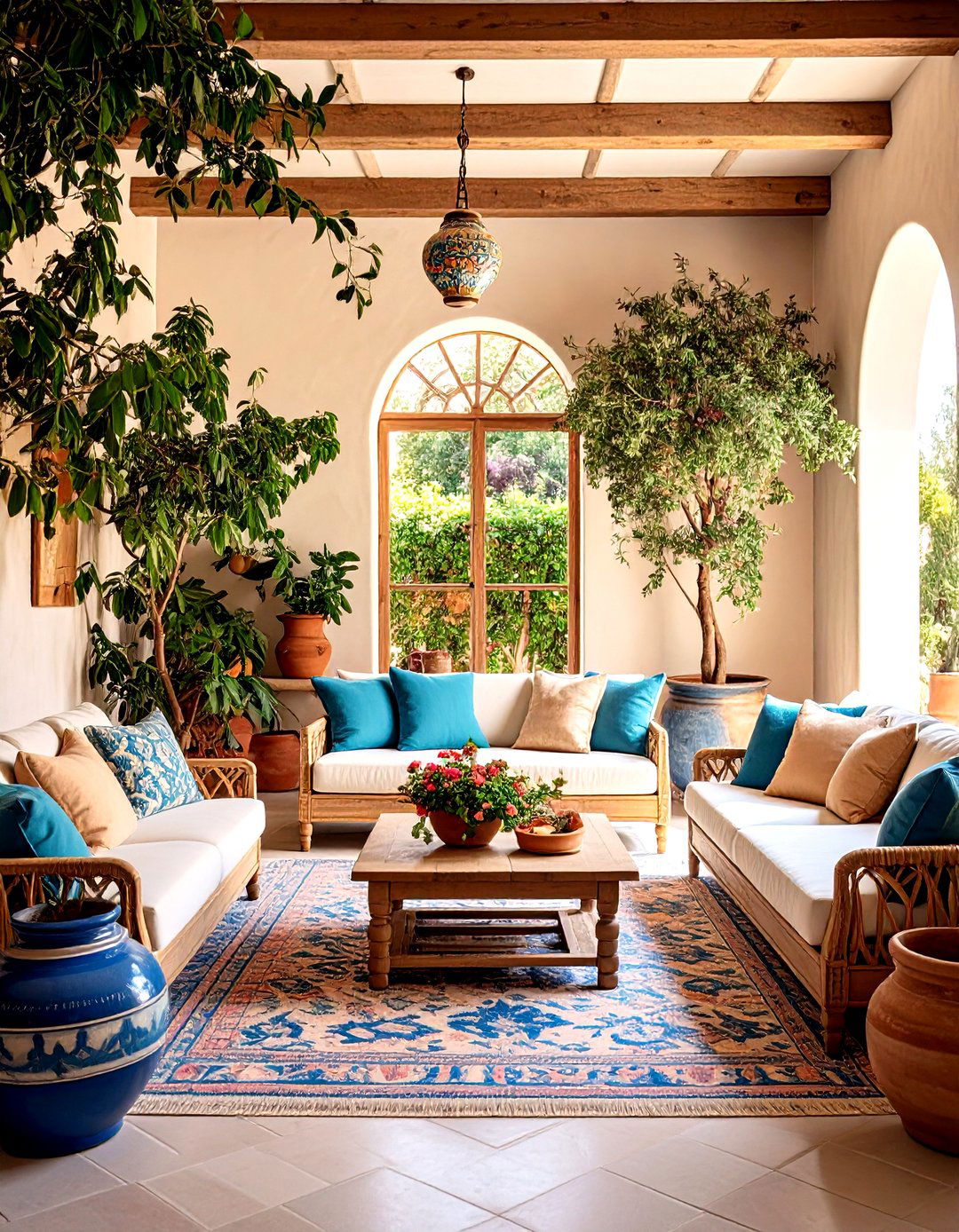
Bridge indoors and outdoors by incorporating lush greenery—potted olive trees, succulents, and trailing ivy—typical of Mediterranean gardens. Position larger plants near windows to frame views, and smaller pots on mantles or shelves. Choose terra cotta or glazed ceramic planters to maintain the Spanish aesthetic. The greenery softens hard surfaces and introduces life and freshness, while the ceramic pots echo the room’s tile accents. This natural element reinforces a connection to the landscape, fostering a tranquil, sunlit atmosphere even within interior walls.
14. Decorative Ceiling Treatments
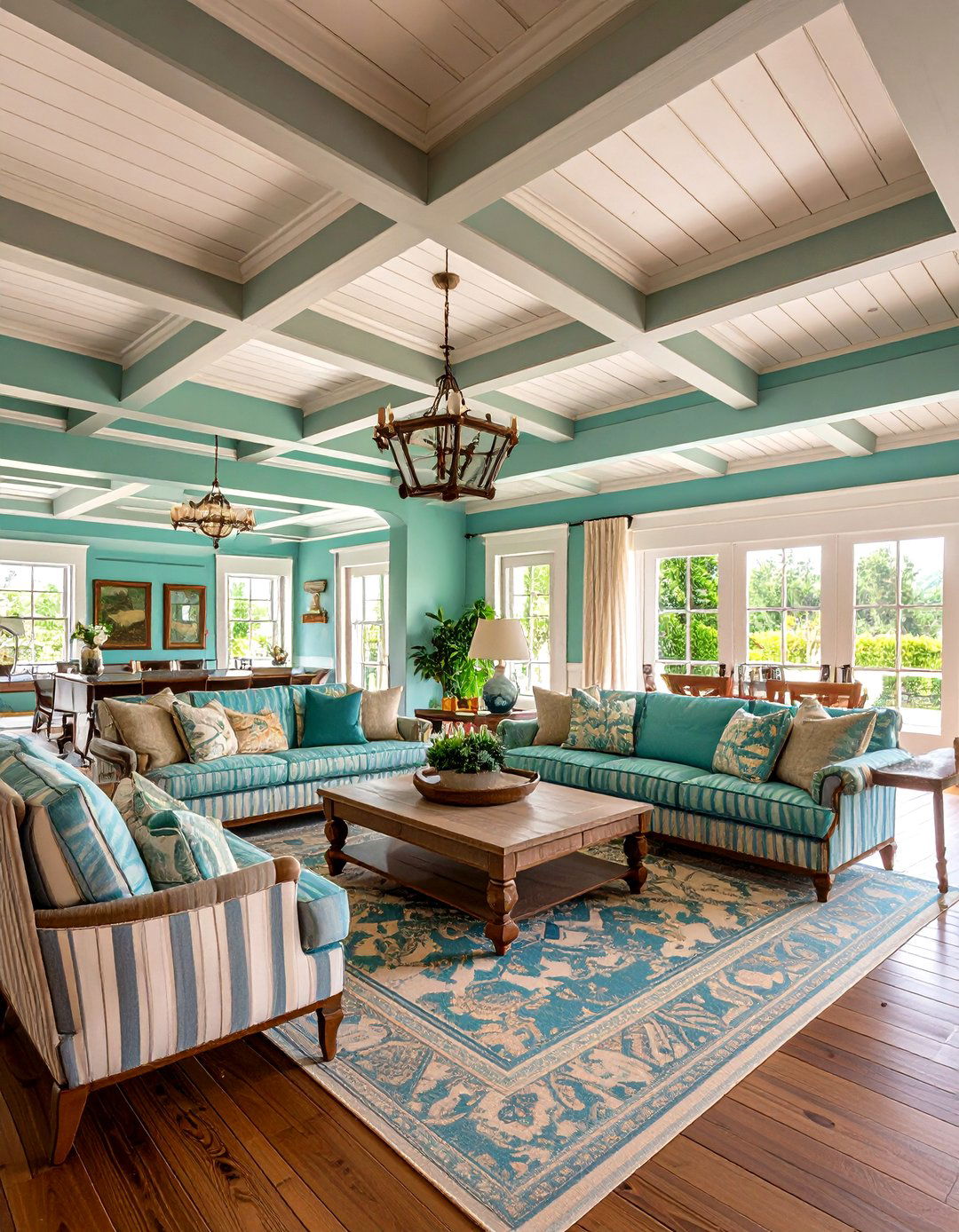
Go beyond beams by adding decorative ceiling treatments—coffered designs, painted motifs, or wooden planks. Coffered ceilings with subtle plaster moldings add depth and classical elegance, while patterned stenciling introduces a bespoke touch. Alternately, reclaimed wood planks create a warm, rustic canopy overhead. When paired with exposed beams, these treatments enrich the room’s architectural complexity. Paint planks in muted tones to preserve brightness or stain them dark for contrast. A thoughtfully treated ceiling completes the immersive Spanish style experience.
15. Ornate Mirrors and Wall Decor
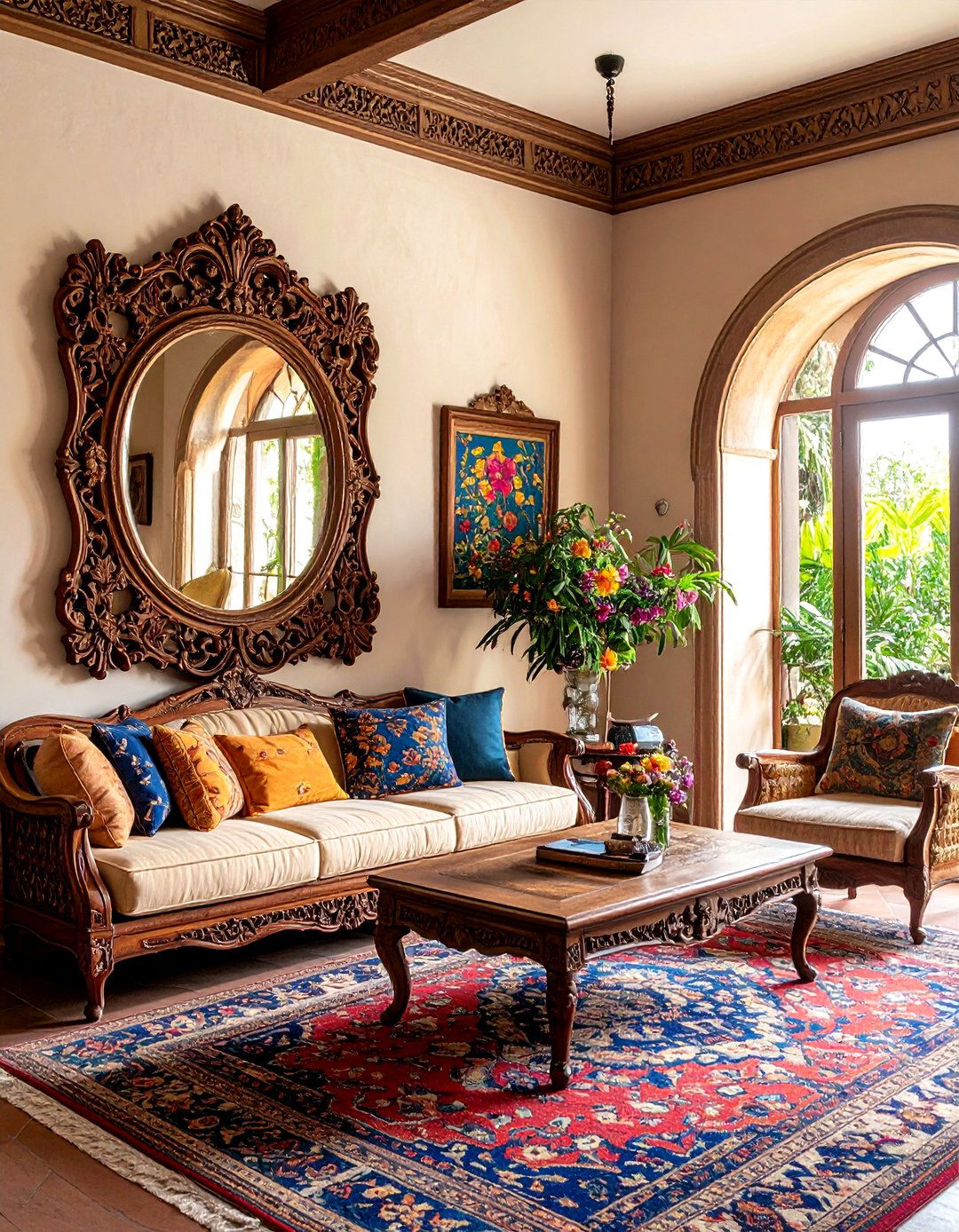
Hang ornate mirrors with carved wooden or iron frames to amplify light and add decorative flourish. Sunburst or arch-shaped mirrors resonate with Spanish design. Complement mirrors with framed art—botanical prints, Moorish tile replicas, or historic Spanish landscapes. Arrange pieces in a salon-style gallery wall or as singular focal accents. Consider decorative metal wall panels or ceramic tile mosaics for added texture. These vertical accents break up expansive walls, providing visual interest while reinforcing the room’s thematic cohesion.
16. Bold Accent Walls

Introduce a bold accent wall using deep indigo, olive green, or terracotta plaster to create drama. Alternatively, apply patterned tile halfway up the wall—known as a “tile wainscoting” effect—culminating in a painted plaster finish above. This layering technique highlights the handcrafted look while delineating the space. Furnishings and artwork placed against this backdrop pop vividly, and the contrast enhances the perception of depth. Accent walls serve as natural stages for key pieces like sofas or consoles, anchoring the room’s layout.
17. Mix of Vintage and Modern Pieces
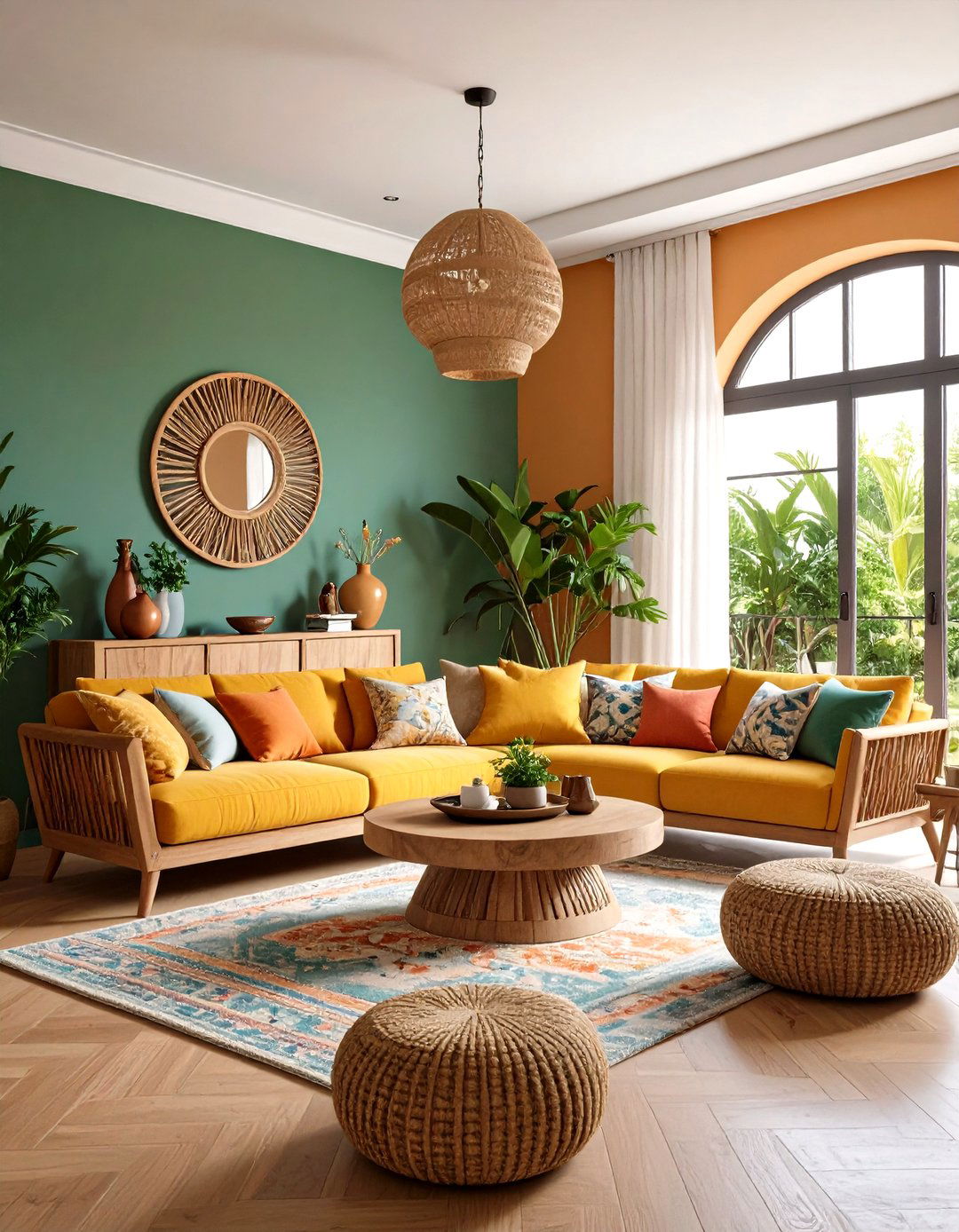
Blend vintage finds—antique chests, traditional pottery—with modern elements like sleek sofas or minimalist coffee tables for a balanced aesthetic. This juxtaposition honors Spanish heritage while ensuring functionality and comfort. Incorporate a contemporary piece in black iron or glass to contrast warmer materials. Curate your collection thoughtfully: a single modern statement item amidst rustic surroundings feels intentional rather than mismatched. This eclectic approach allows personalization and avoids the room feeling like a historical re-creation, maintaining relevance for today’s lifestyles.
18. Curved and Rounded Furniture
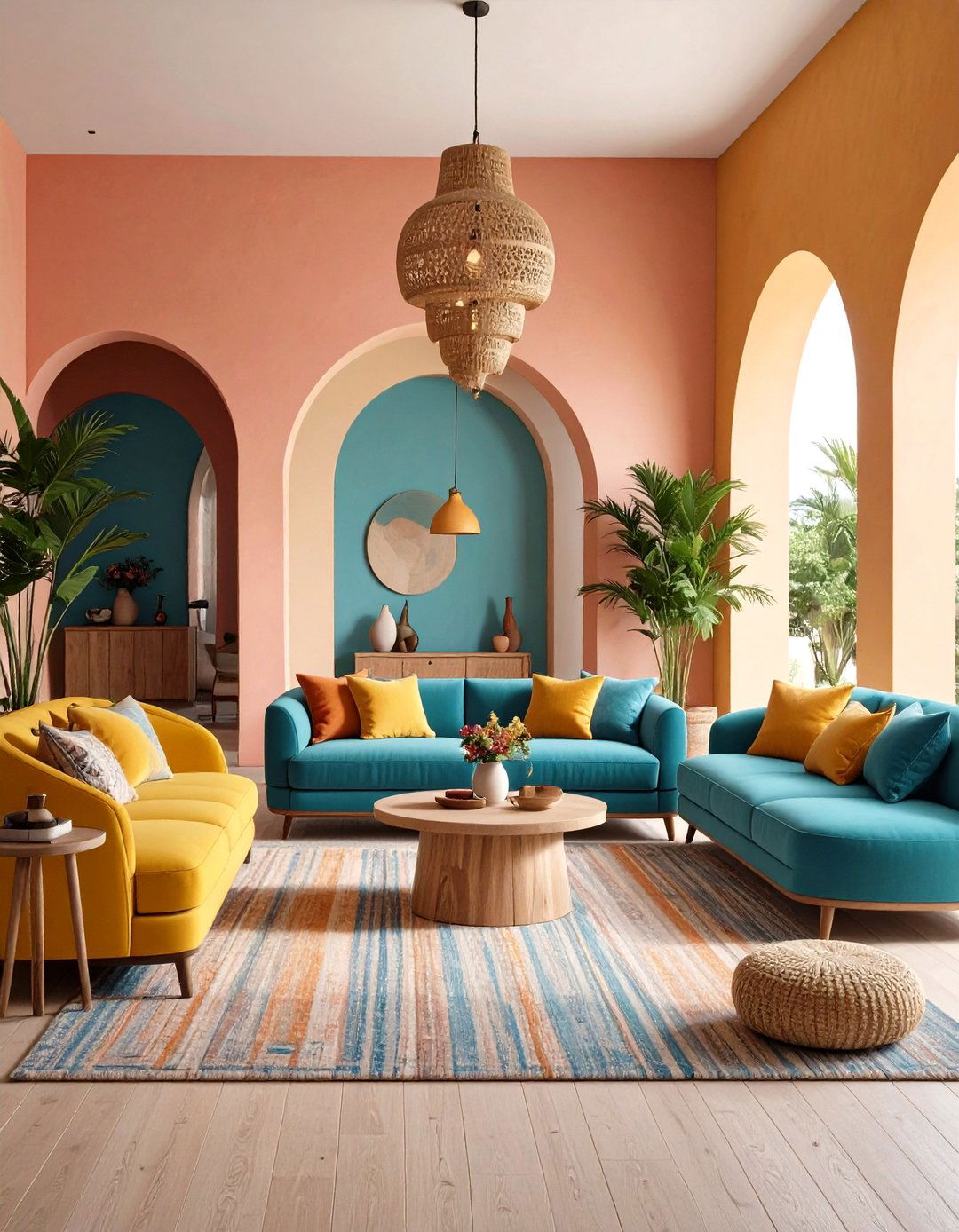
Select furniture with curved silhouettes—rounded sofas, arched console tables, and barrel-back chairs—to echo architectural arches. Soft curves create a welcoming ambiance and contrast against angular floor tiles and beams. Upholstered pieces in natural fabrics with welt or nailhead trim further enhance the Mediterranean feel. A circular ottoman with mosaic tile top can serve as a coffee table alternative. Through form alone, curved furniture pays homage to traditional Spanish design while maintaining a contemporary, comfortable edge.
19. Natural Fiber Rugs and Flooring Layers
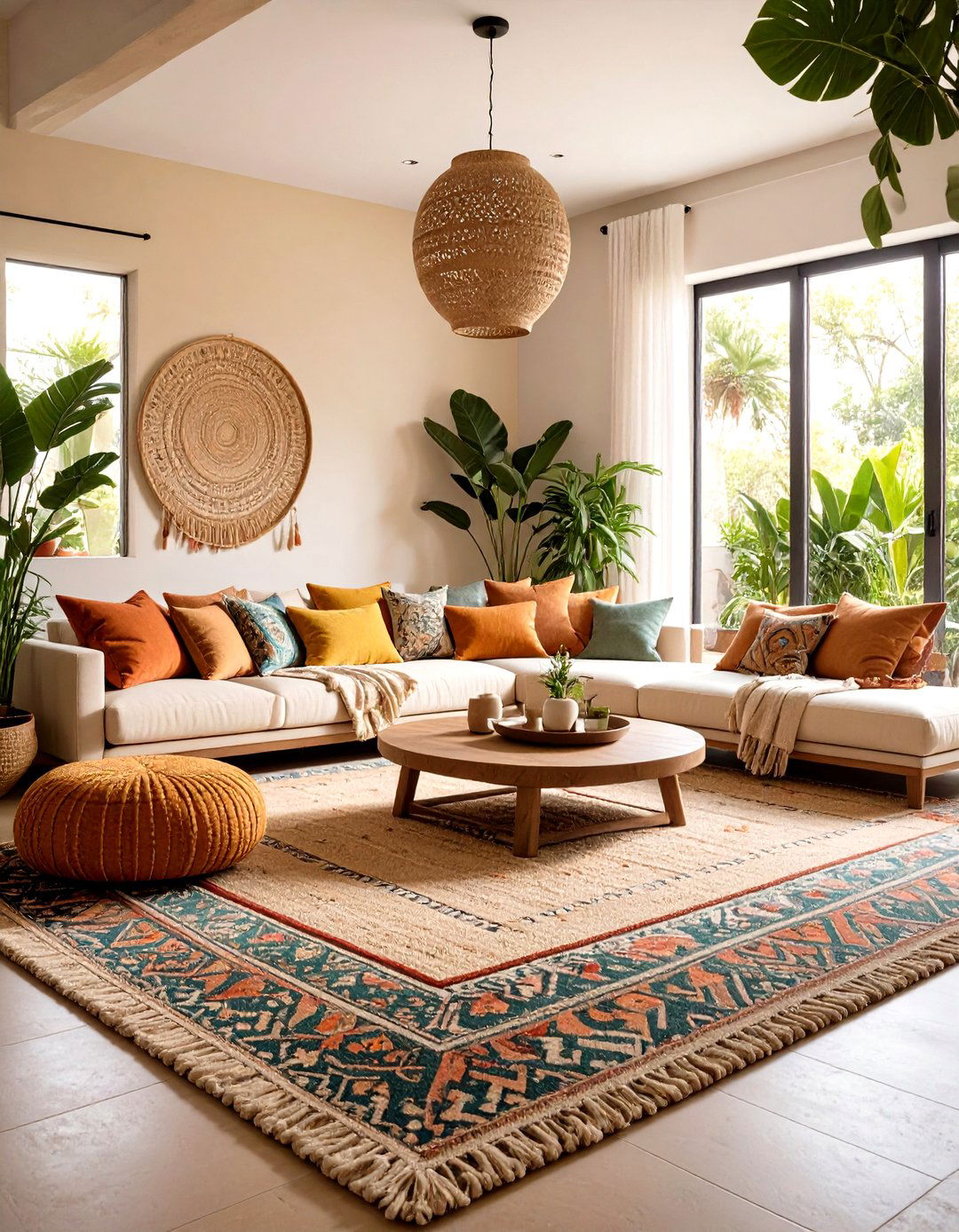
Layer natural fiber rugs—jute, sisal, and seagrass—over tile or wood floors to soften the room and define seating areas. These neutral weaves complement colorful textiles and tile patterns without competing visually. A textured runner leading to the seating zone adds guidance and depth. Combine fiber rugs with smaller patterned kilims for an eclectic layered look. The mix of smooth tile, warm wood, and coarse fibers enriches the sensory experience of the room, reinforcing the Spanish style’s emphasis on natural materials.
20. Personalized Artisanal Touches
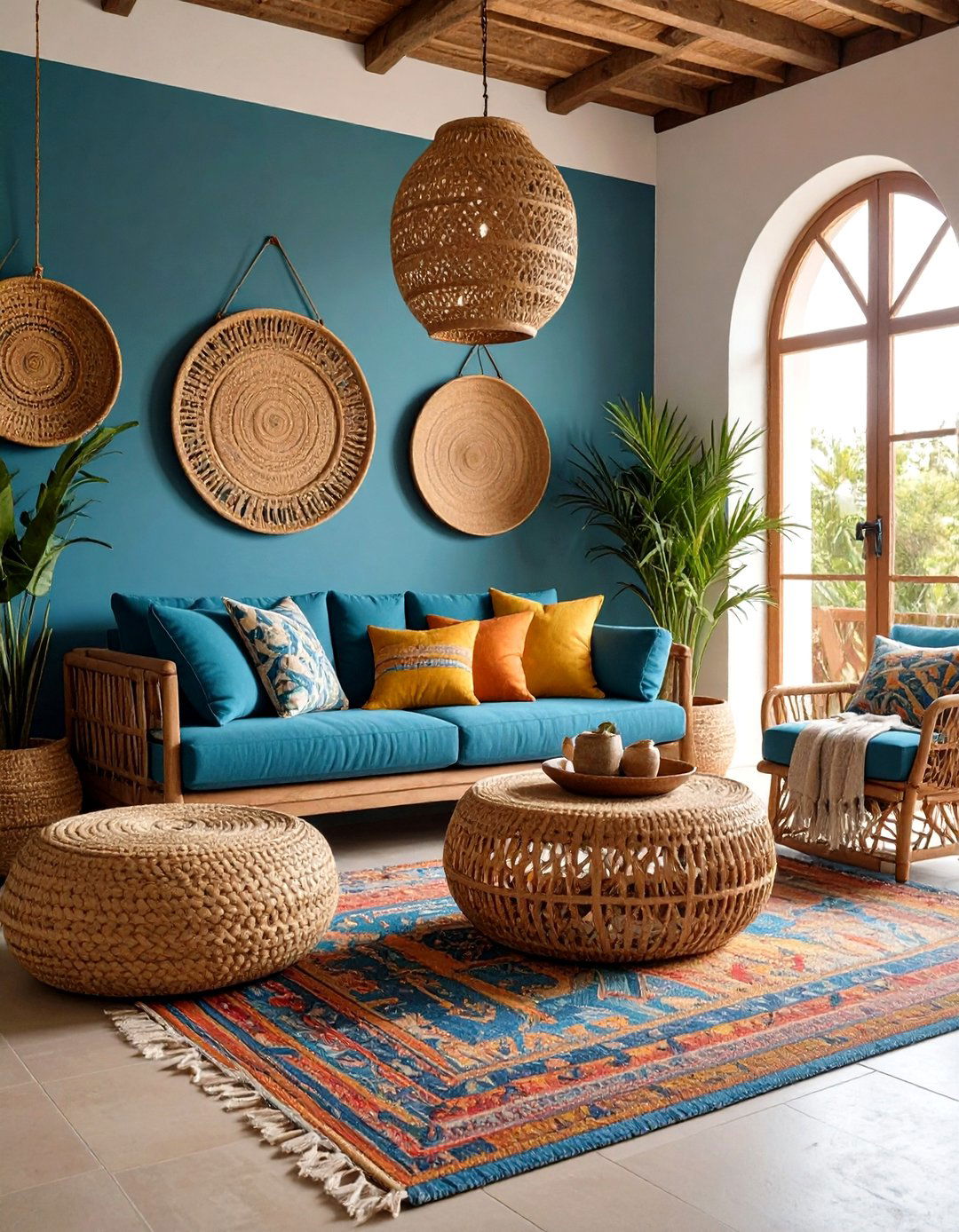
Incorporate personalized artisanal accents—handwoven baskets, carved wooden bowls, and family heirloom textiles—to give your living room a unique story. Seek out local craftsmen or travel markets for one-of-a-kind pieces that reflect your experiences. Display these items in niches, on open shelving, or atop coffee tables. Their individual character and slight imperfections celebrate the human touch central to Spanish design philosophy. Such curated collections transform a beautiful room into a personal sanctuary, rich with history and meaning.
Conclusion:
By weaving together natural materials, handcrafted details, and signature architectural elements, these 20 ideas offer a roadmap for achieving an authentic Spanish style living room. From the warm earthy palette and exposed beams to intricate tile accents and personalized artisanal touches, each element plays a role in crafting a space that feels both historic and updated. Embrace the interplay of texture, color, and form to create a living room that not only honors Mediterranean traditions but also serves as a cozy, welcoming gathering place tailored to your personal style.


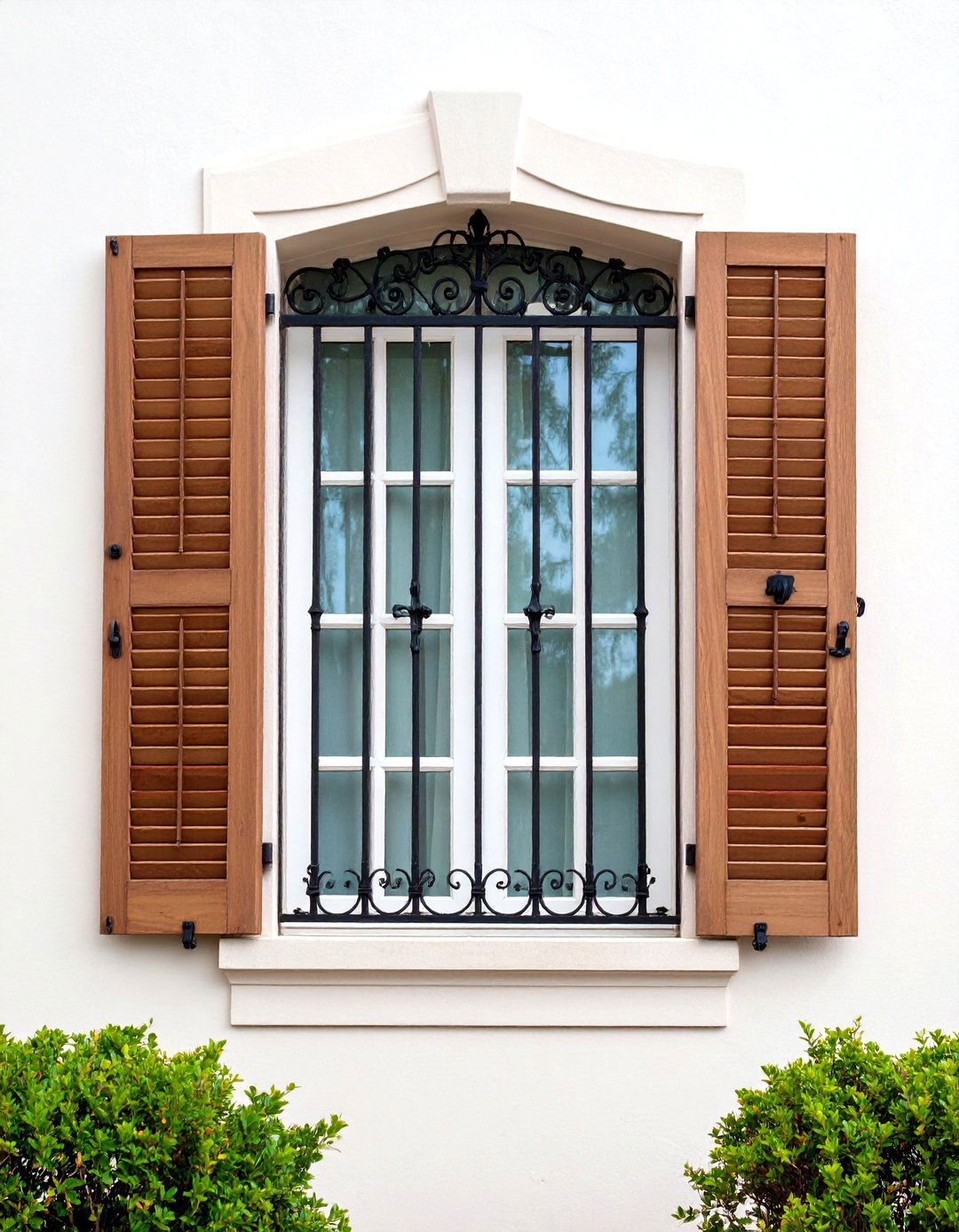
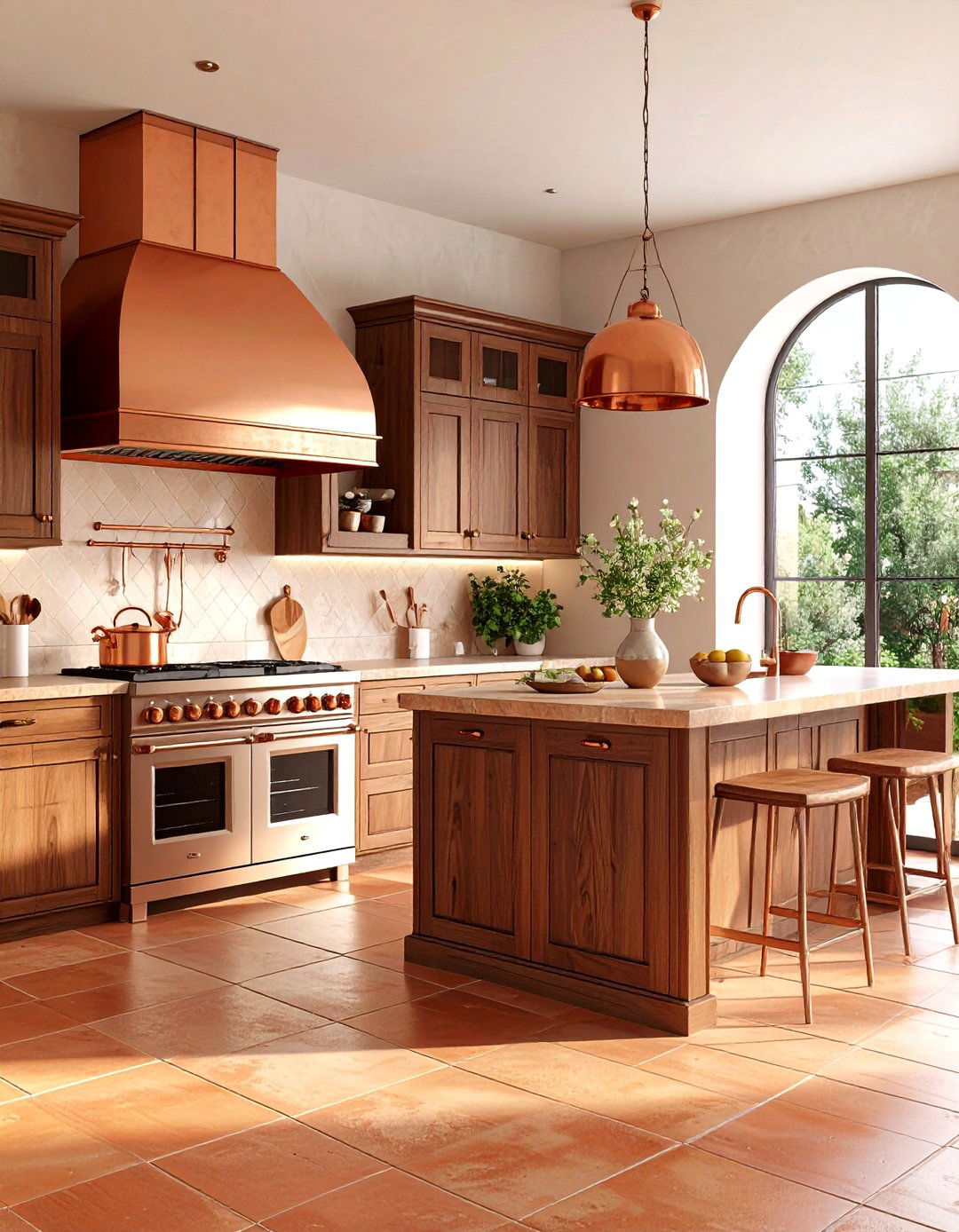
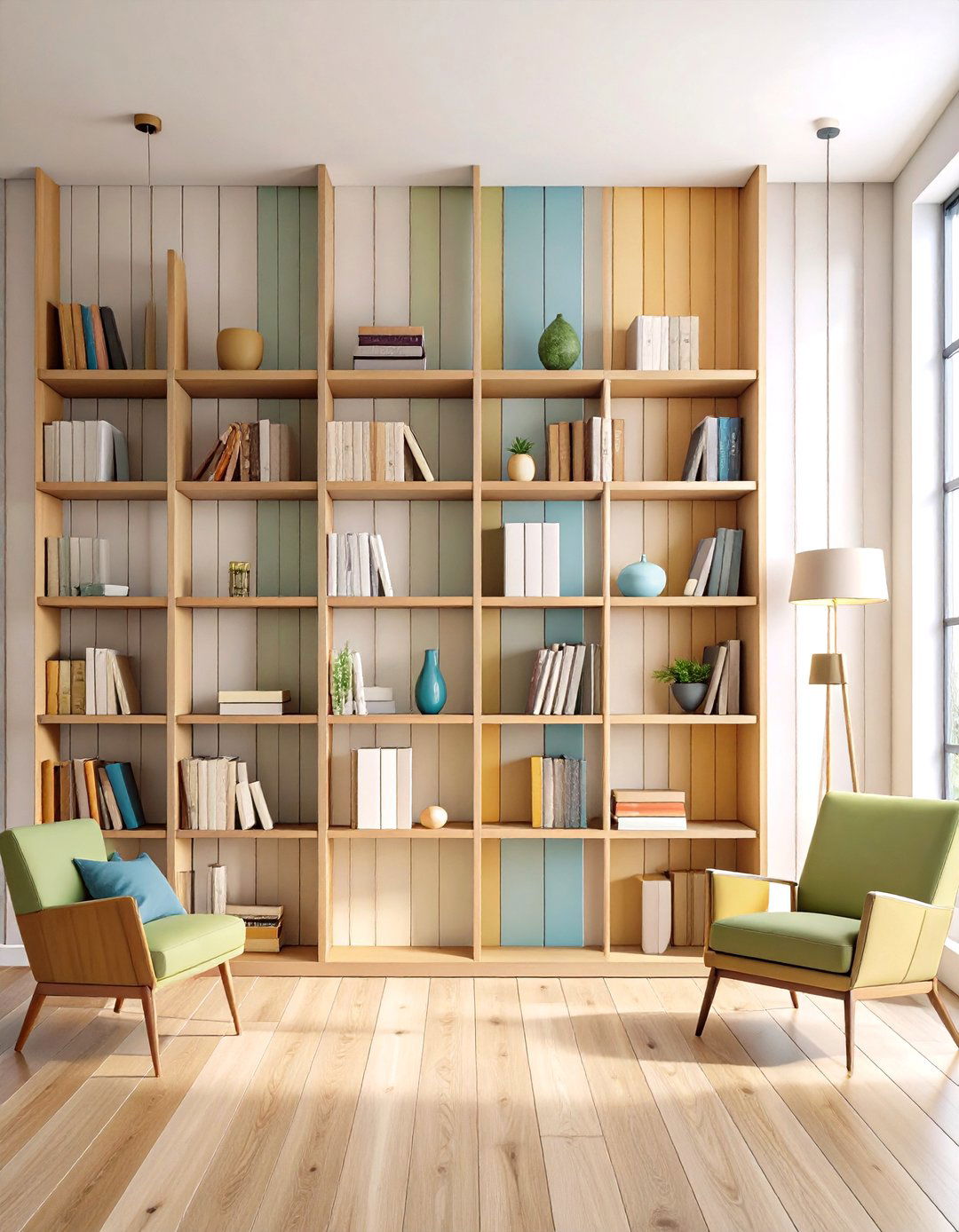
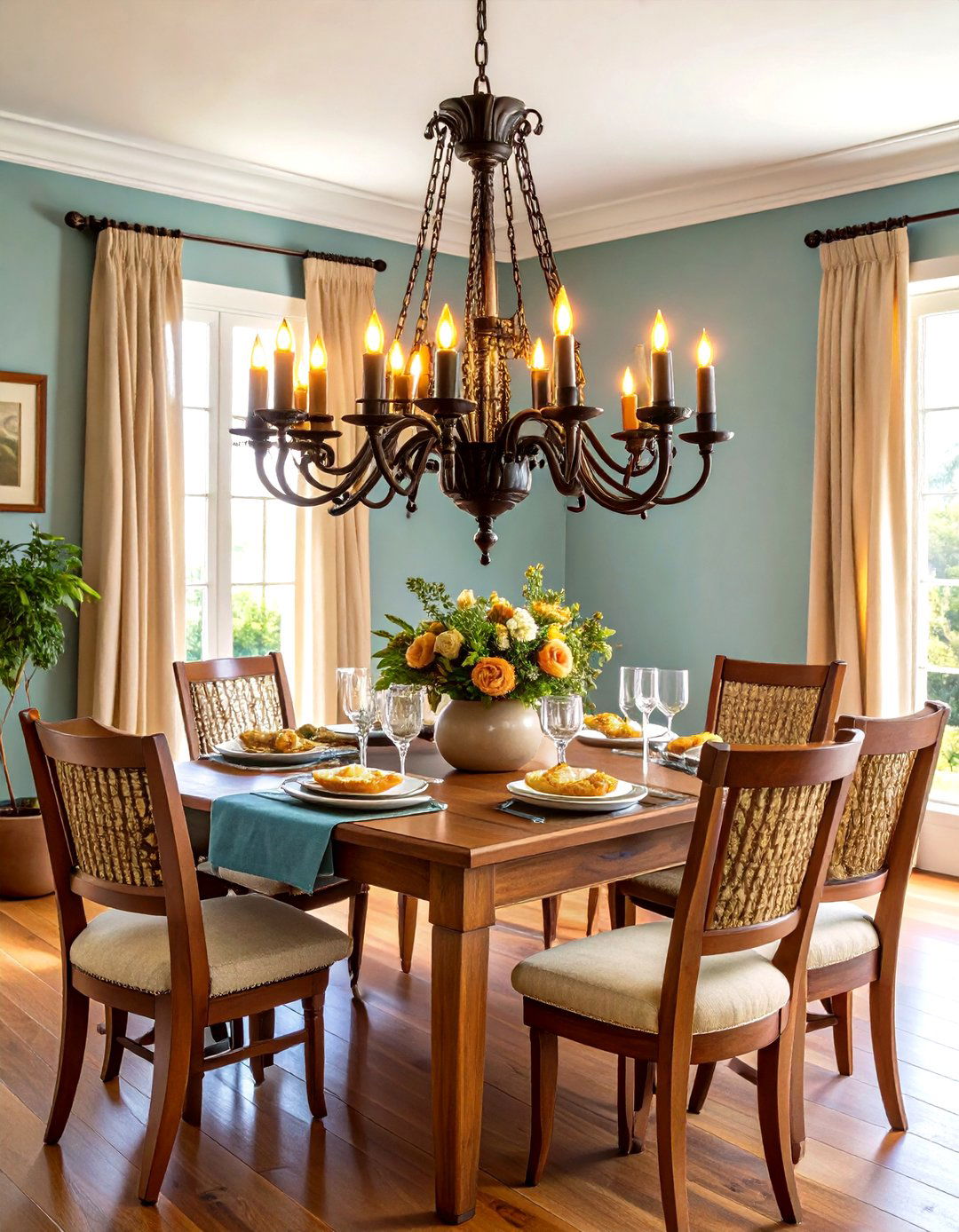


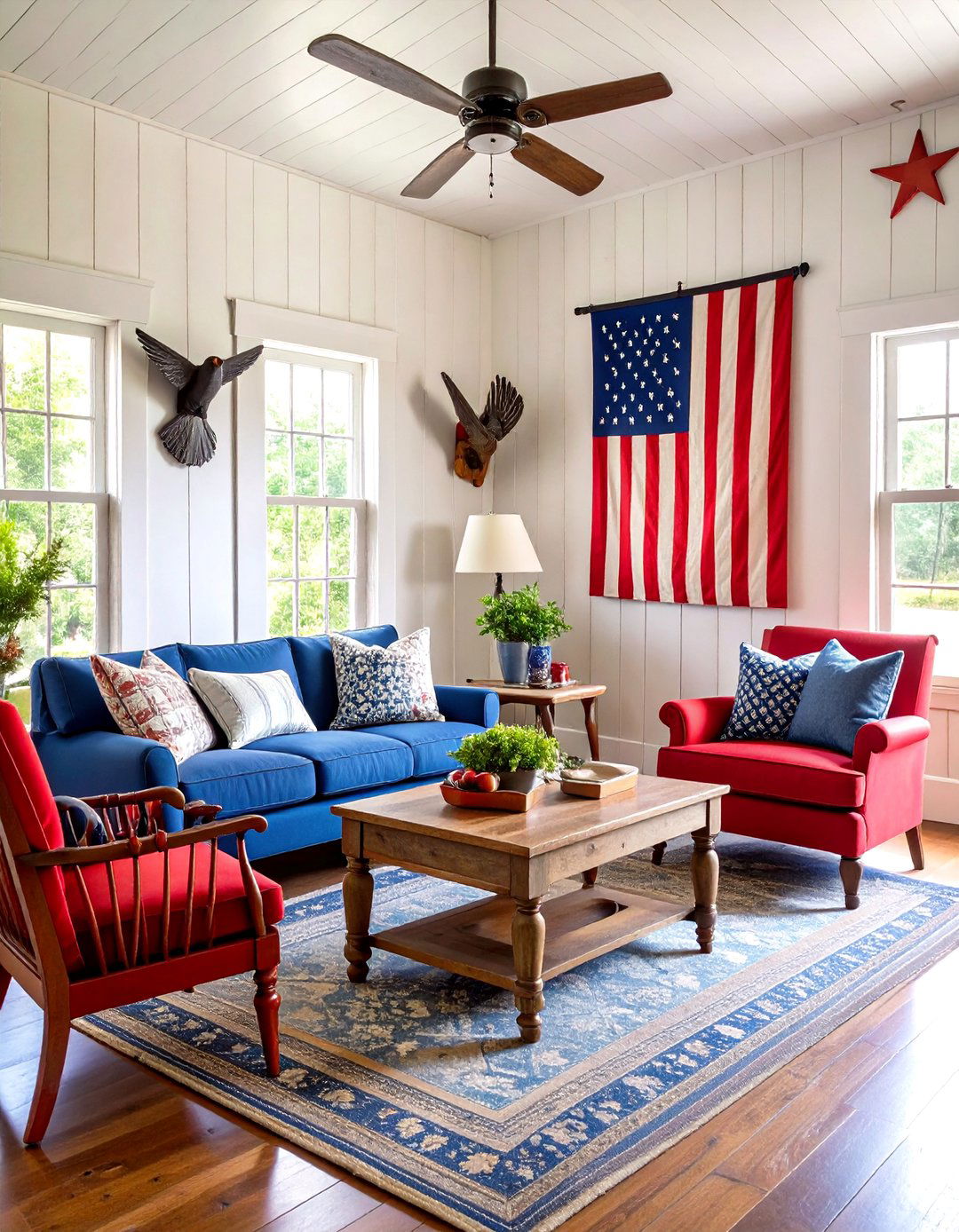
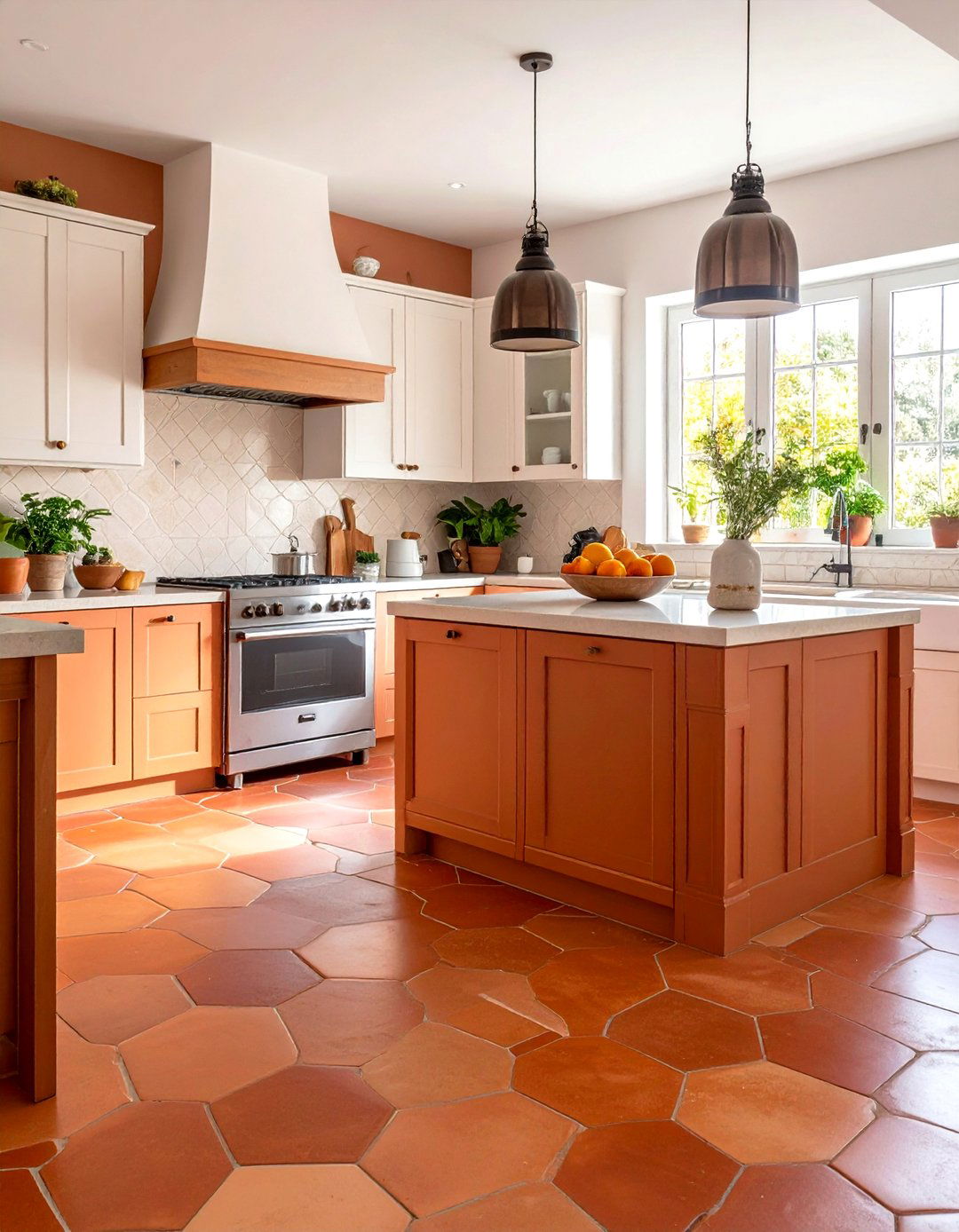
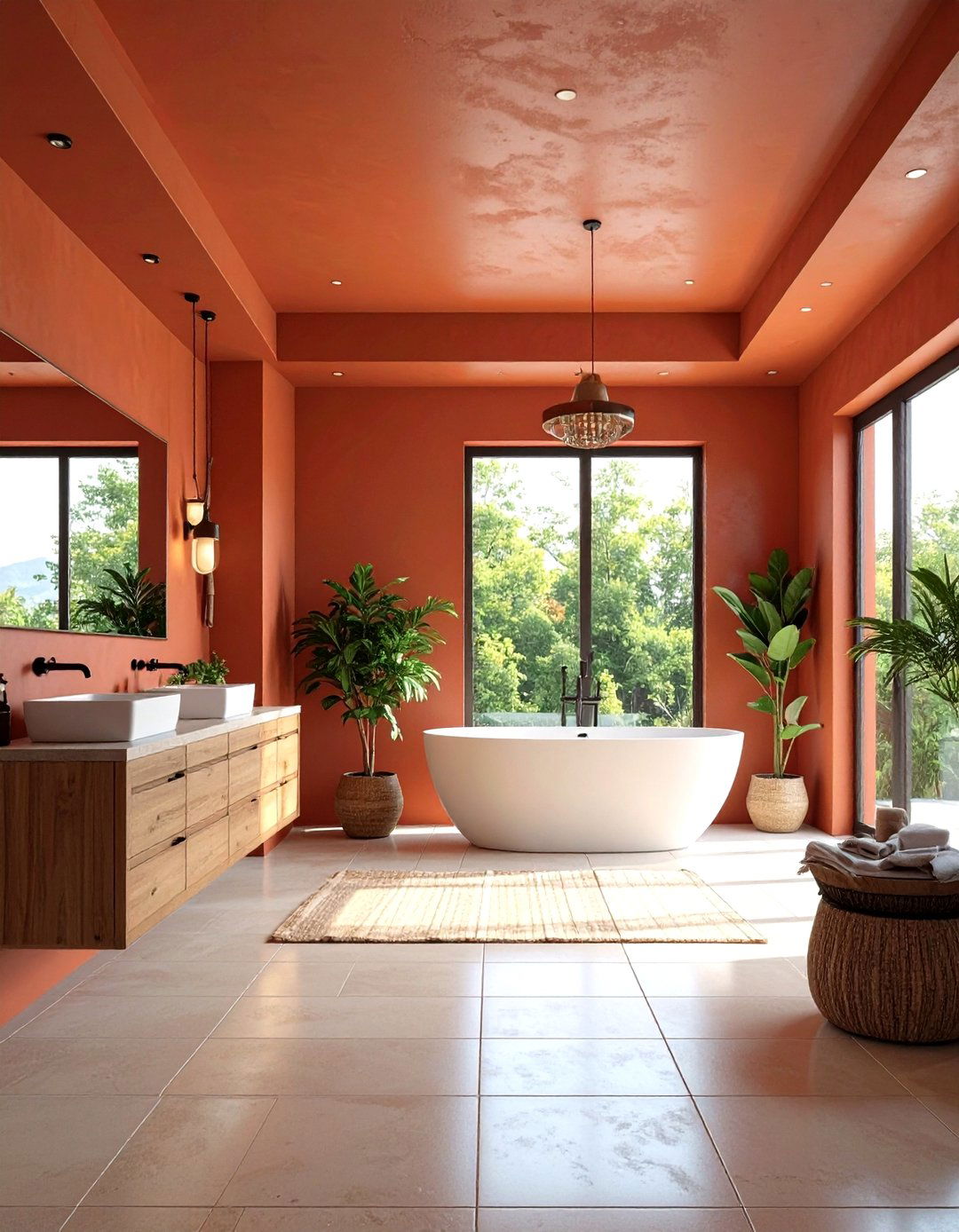
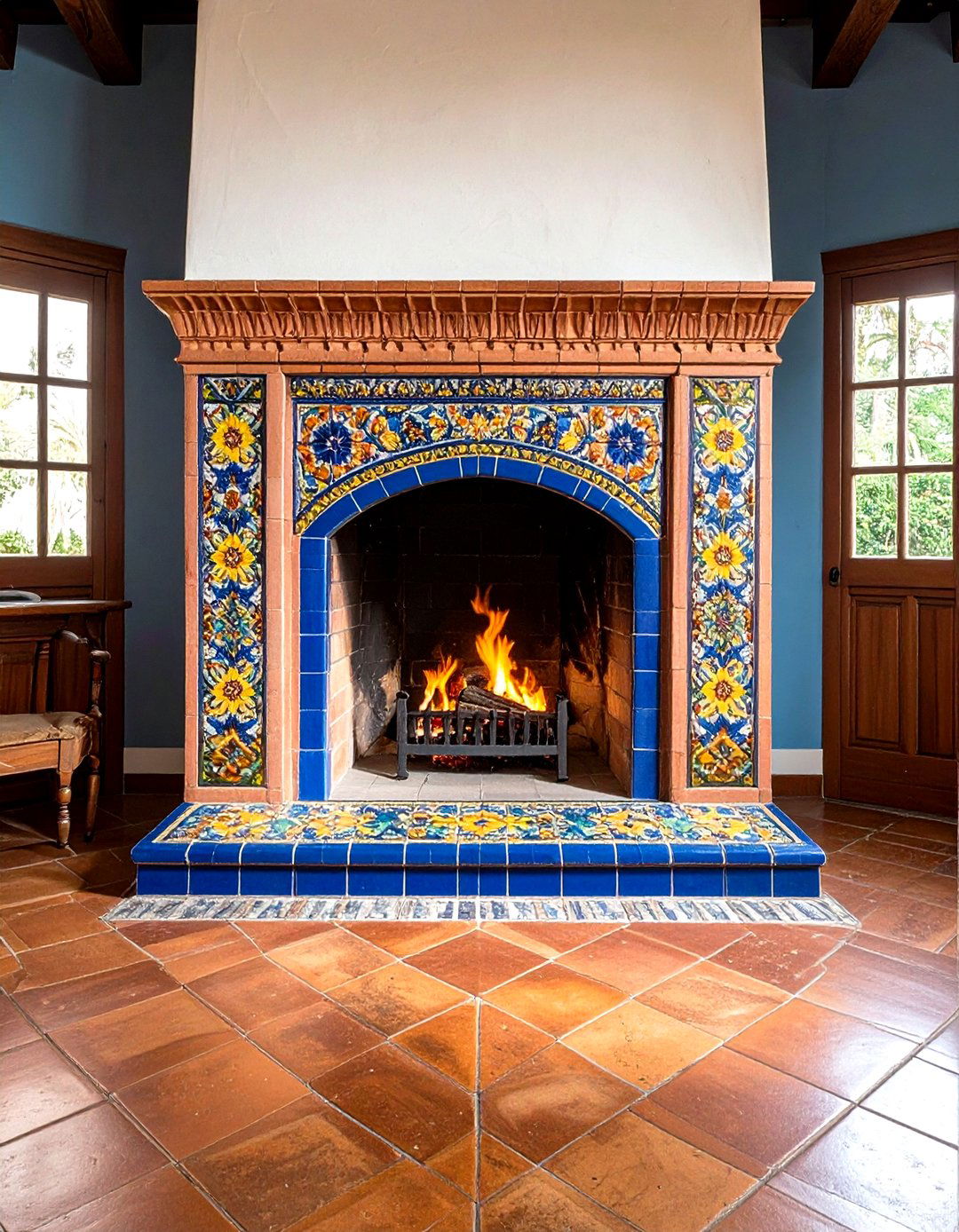
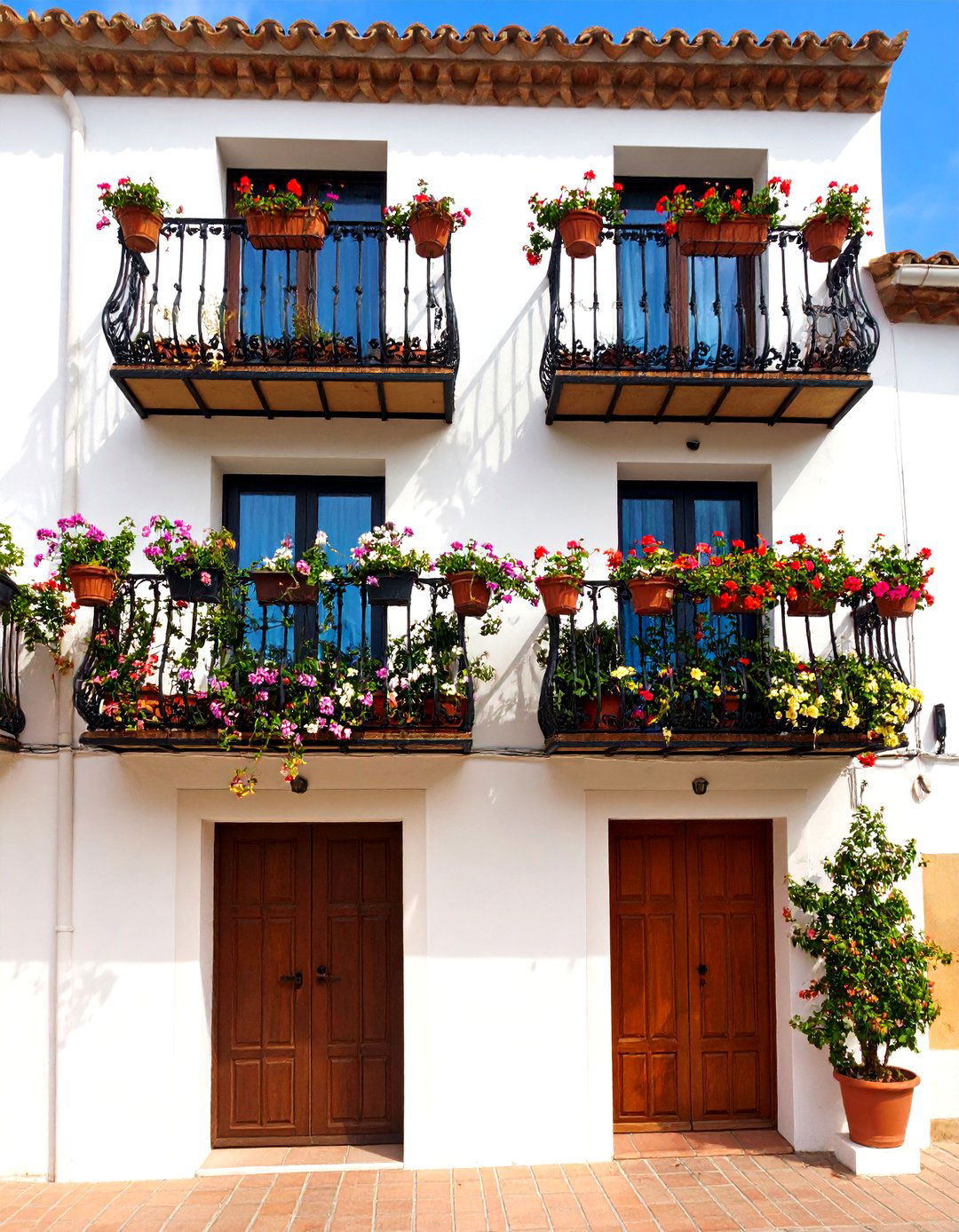

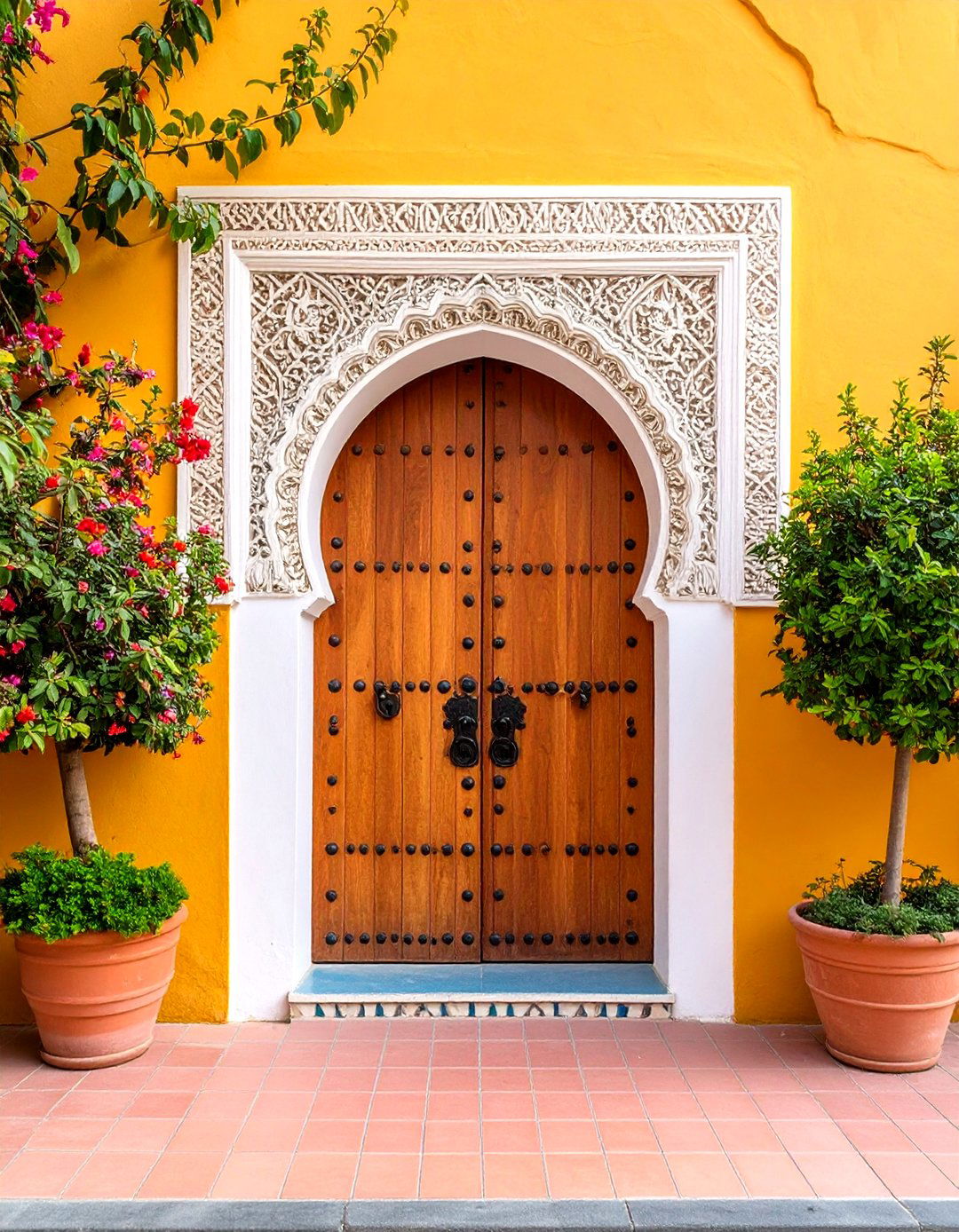

Leave a Reply